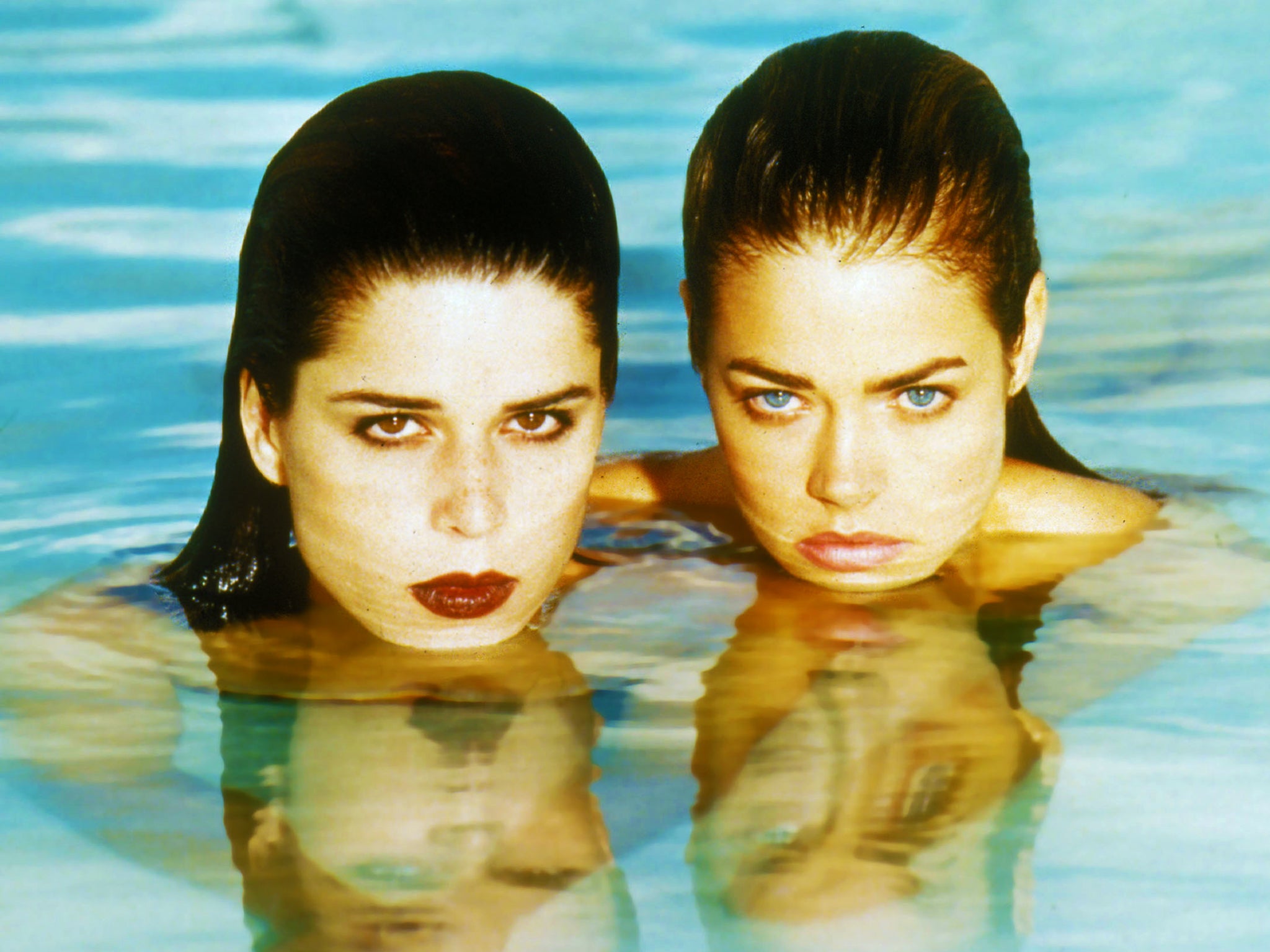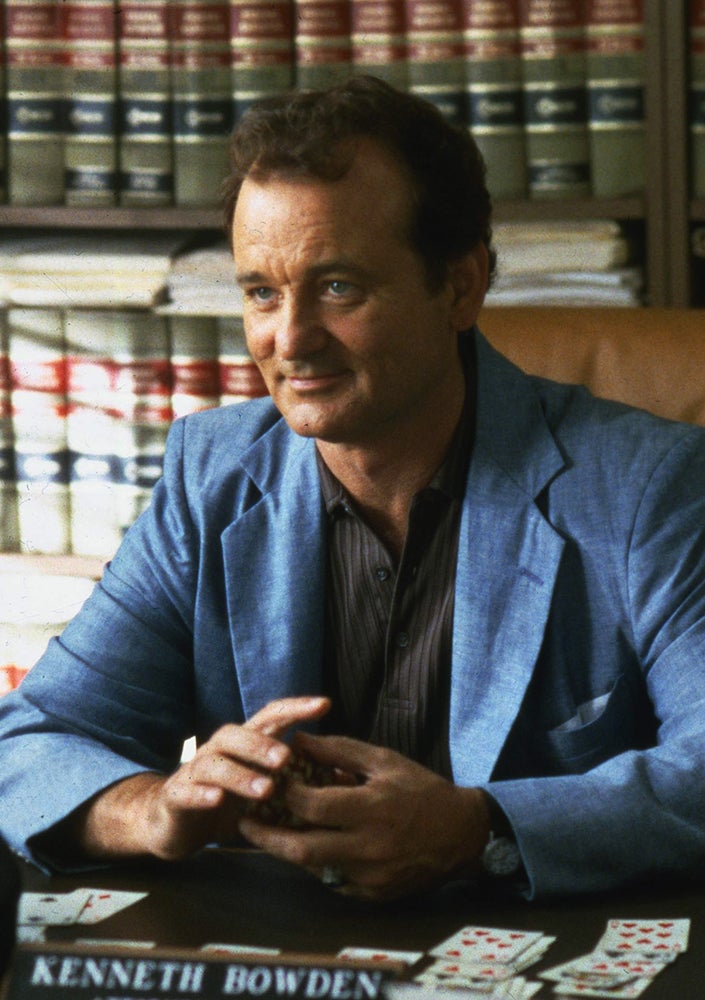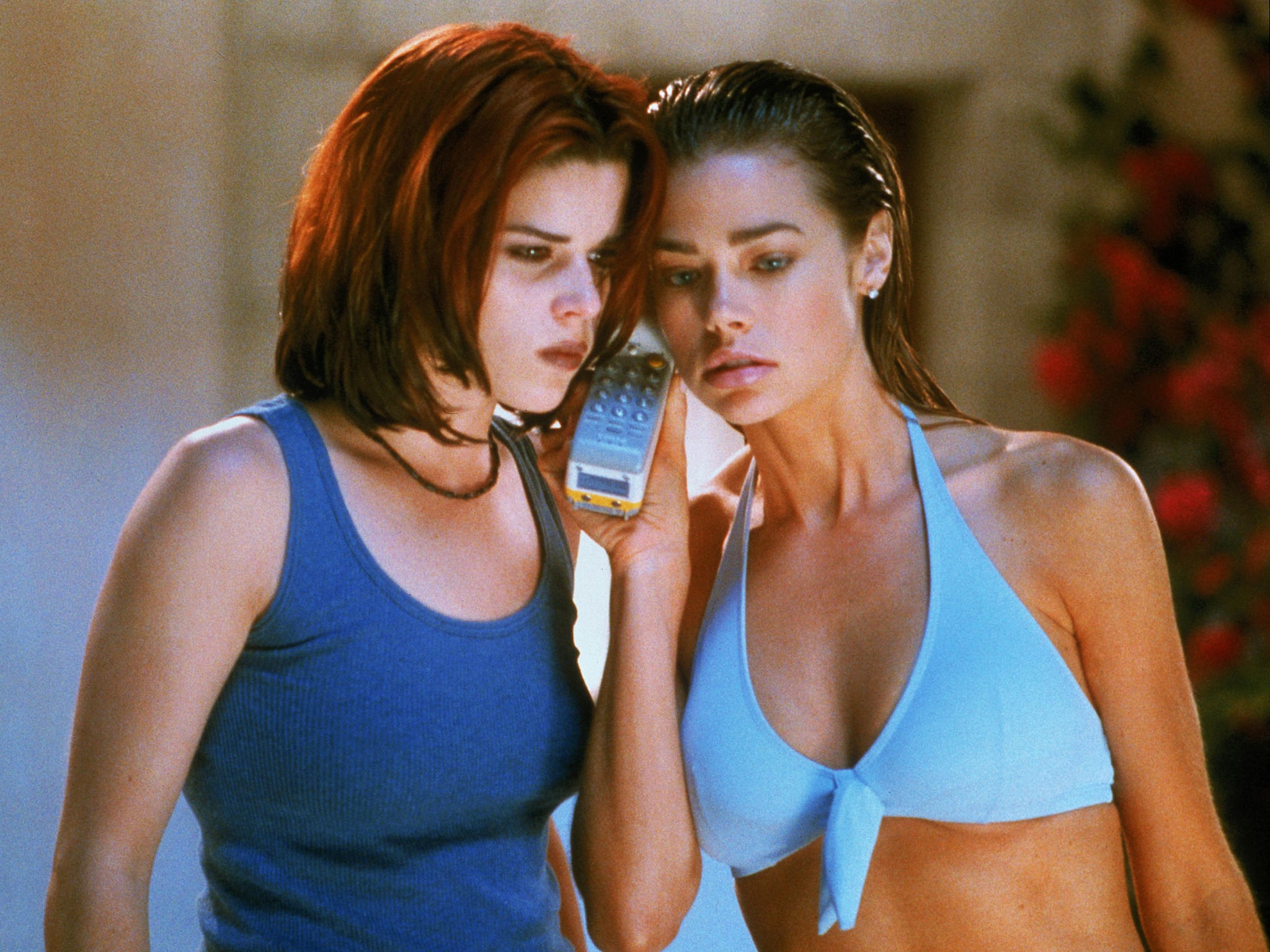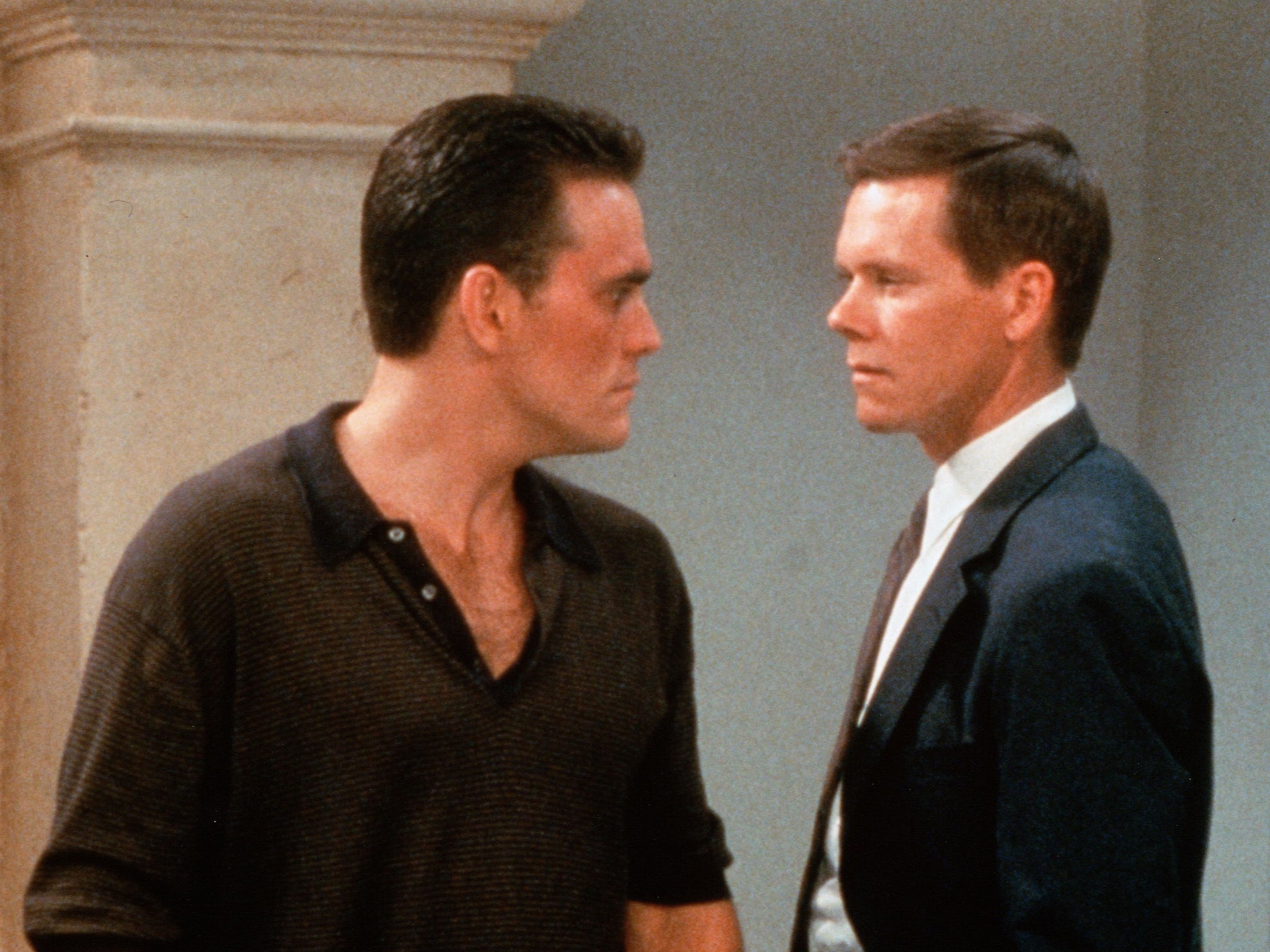‘All of a sudden, the clothes are flying off’: Plot twists, full frontal nudity and the X-rated making of Wild Things
Twenty-five years ago, a sweaty, tongue-in-cheek erotic thriller starring Neve Campbell and Denise Richards left an indelible mark on a generation of horny teenagers. Tom Fordy speaks to its very proud makers

Your support helps us to tell the story
From reproductive rights to climate change to Big Tech, The Independent is on the ground when the story is developing. Whether it's investigating the financials of Elon Musk's pro-Trump PAC or producing our latest documentary, 'The A Word', which shines a light on the American women fighting for reproductive rights, we know how important it is to parse out the facts from the messaging.
At such a critical moment in US history, we need reporters on the ground. Your donation allows us to keep sending journalists to speak to both sides of the story.
The Independent is trusted by Americans across the entire political spectrum. And unlike many other quality news outlets, we choose not to lock Americans out of our reporting and analysis with paywalls. We believe quality journalism should be available to everyone, paid for by those who can afford it.
Your support makes all the difference.John McNaughton remembers the first time he read the script for Wild Things, the rampantly sexy neo-noir from 1998. The director – then best known for the grim, ever-contentious Henry: Portrait of a Serial Killer – needed a commercial film. “To ingratiate myself into Hollywood to some degree,” he tells me.
In the story, two Florida teens from opposite sides of the tracks – bitchy socialite offspring Kelly (Denise Richards) and swamp-dwelling trailer trash Suzie (Neve Campbell) – accuse their dishy guidance counsellor Sam Lombardo (Matt Dillon) of rape. Lombardo is then investigated by dodgy cop Ray Duquette (Kevin Bacon).
“I was lying in bed reading the script and I could see it coming that Matt Dillon was falsely accused,” recalls McNaughton. “I thought, OK this is some TV movie, I know where this is going, so I skipped ahead to the last three pages.” But the end was so unexpected that McNaughton had “no f***ing idea” how the story had played out across the pages in between. “I thought, I have to go back and read this!” he says, laughing. “I love reading a script where I don’t see it coming and think, man, I haven’t seen this story before.”
Released in the US on 20 March 1998, Wild Things was a sexual awakening for young cinemagoers – plus all the teens who sneaked a look on video – and has remained a cultural touchstone, increasingly appreciated as a slice of wanton sleaze, and for having its tongue wedged firmly in cheek.
It appears to be a story of sexual misconduct, sexual power and, well, sex – a hunk of raw, unfettered, Nineties-flavoured raunch. But it’s a masterful sleight-of-hand trick, too: a murky mire of money, murder and betrayal, with its line-up of characters conspiring and double-crossing each other. The story is so tightly plotted with rug-pulls and not-what-they-seem-to-be machinations, it caused screenwriter Stephen Peters sleepless nights. “I’d wake up at 3am and a little thread of the story would go ‘boink!’” he says. “I’d have to go back and fix things. Because what happens on page seven impacts what happens on page 90.”
The idea developed from an innocent encounter when two teenage girls called on Peters and asked to wash his car as part of a fundraiser. “They came back to get their five dollars but I couldn’t find my wallet,” he says. “I told them to step inside for a second and shut the door. I found my wallet, paid them and they left. I stopped and thought, I was in a situation where these two girls could say anything about me.” The scenario was replicated and given a dark twist in Wild Things.
I called up Kevin Bacon and said, ‘You’re exposed in there’. Kevin said, ‘How did it look?’ I said, ‘It looks pretty good’. Kevin said, ‘OK, I’m fine with it!’
The late Nineties was ripe for a zeitgeisty noir redux. Scream, with its cast of culturally-on-the-pulse youngsters, outlined and broke genre rules. Elsewhere, butter-wouldn’t-melt stars were breaking taboos with horned-up wish fulfilment scenes. (See Sarah Michelle Gellar and Selma Blair kissing in Cruel Intentions.) But for Peters, Wild Things was more a satire of Basic Instinct and the cycle of erotic, often ludicrous thrillers that had dug their nails deep into Nineties cinema. “Not that I don’t like those films,” he says. “But I thought I could write a film with a couple of twists and keep laying it on until it’s a joke – a fun one – so you get caught up in it.” For McNaughton, however, the impetus had nothing to do with Nineties trends. “It was to be transgressive,” he says. “If someone draws a line and says, ‘Here’s the boundary of good taste,’ it’s your job to cross it – to push things further.”
The film was produced by Peter Guber’s Mandalay Pictures. Though it was originally set in a Phoenix, Arizona-like suburb, Guber – a self-styled hotshot producer – suggested relocating to south Florida, where the story tapped into class frictions: super-wealthy, influential socialites vs gator-wrestling Everglades hicks. “Sometimes producers actually have good ideas,” laughs Peters. Indeed, the Florida locale radiates the film’s seediest impulses: hot, humid and very sticky.
At the time of release, the major draw was Campbell – a wholesome teen in TV drama Party of Five and the virginal heroine from Scream – going goth and getting down with Richards, Hollywood’s hot new thing. “That’s exactly why Neve did it,” says Peters. “She didn’t want to be cast as a teen virgin. This was one way to shake that off immediately.” McNaughton initially wanted Campbell to play Richards’s preppy princess role. “Neve didn’t seem like a girl from the wrong side of the tracks.” Campbell talked McNaughton round. “You have to understand where I came from,” she told him. “My family... many of them don’t have all their teeth!”
At one point, Robert Downey Jr was in line to play Matt Dillon’s role of Sam Lombardo but couldn’t come to terms financially. The eventual cast would prove a slick ensemble of character actors but the ace up the sleeve is Bill Murray, playing Lombardo’s slimeball defence attorney. During this mid-late Nineties period – when Murray’s box-office clout had waned and before his uber-cool reinvention under Wes Anderson and Sofia Coppola – he’d show up in this kind of small, sharp, overlooked role. Murray – a pal of McNaughton’s – simply called the director. “I hear you’re working on a picture,” he said. “You got anything for me?”

Producer Steven Jones recalls that Murray did a disappearing act. “Bill is someone who’s hard to communicate with,” says Jones. “You can’t find him, you don’t know where he is, there’s no way to talk to him, he has no agent. I was getting calls from the studio going, ‘Bill’s doing it, right?! We haven’t heard from him. We’re spending $20m, and all we have is your word’. I said, ‘No, all we have is his word...’”
Later, when they were on location in Florida, Jones got a sudden call from Murray. “As I’m talking, a line forms – it’s the hair and make-up person, the wardrobe person, the prop person,” says Jones. “They’re all going, ‘Don’t hang up! We need to talk to Bill about his clothes and his hair!’ He’s very flighty in that way.”
Matt Dillon enjoyed his “sleaze bucket of a lawyer” and (in the same year that he starred in There’s Something About Mary) saw the funny side of the script. “There’s an element of sleaze in this film that’s actually part of the humour of the thing,” he said in a 1998 interview. “Because I think the kiss of death for this film is if anybody takes it too seriously. It’s supposed to be fun... Yeah, you’ve gotta pay attention because it’s well written. The plots and twists are all there... But there is an element of sleaze with these characters. That’s one of the things I liked about it. Everybody appears to be one thing and you find out they’re something else.”
That tricksy double-crossing often proved difficult for the principal actors. “Because no one was ever really telling the truth,” says McNaughton. “They were all running an agenda against each other.” In the end, it’s Suzie – seemingly killed in the second act – who’s the true mastermind. “It’s the most political film I ever made,” says McNaughton. “Who wins? The wealthy and powerful people lose in this movie.” Suzie’s real weapon is sex. McNaughton, who explains that he went to art school rather than film school, shrewdly embraced the trashiness. “In the world of fine art, you can combine the high and the low,” he says. “You can reach for trash. You can take elements that would be considered trashy and put it in your work as a comment in some way.”
Wild Things’ sex is indeed trashy – gloriously so – but perhaps more than just gratuitous. “My notion was how to portray sexual power,” says Peters. “They were very powerful girls because they knew what effect they had. It was another trick in the story – it looks like they’re being exploited, but they’re doing the exploiting.”
Richards negotiated over how many nipples would be seen (she bartered for one but ultimately showed both). Though – at a time when actresses going topless was almost expected – Campbell had a no-nudity clause. According to McNaughton, it was part of her deal with Party of Five. “We had to be really careful with her,” he says. “She was a nice girl in Party of Five.”

Twenty-five years on, the once obligatory boobs-out sex scene has been largely ousted from mainstream cinema. Consequently, scenes in Wild Things still feel dangerously raunchy. Specifically, a threesome between Dillon, Richards and Campbell, and a steamy swimming pool fight-turned-make-out session with Richards and Campbell. Richards later said that filming the scenes was “terrifying”. Both Richards and Campbell admitted sinking margheritas beforehand.
In the 2000-set Hulu comedy PEN15, teenagers get together to watch the hotly anticipated Wild Things on video – confirming the sex scenes’ crucial, erm, entry into horny teen lore. (On a personal note, I was 15 years old when Wild Things hit UK cinemas and had to watch the dreary Blues Brothers 2000 just so I could sneak into the next screen afterwards and see Wild Things. Which I did twice.)
Jones recalls making the scenes as “safe and comfortable” for the actors as possible. “I think we handled it in a relatively sophisticated fashion.” It was before films used on-set intimacy coordinators. “I would have loved to have one,” says Jones. “Because John would get really nervous when it came time to shoot that stuff. It never stopped us... we did [sex scenes] in every movie, just about.” McNaughton agrees that shooting sex scenes was always “really uncomfortable”. He adds: “There’s much apprehension... usually, going in, it’s, ‘I won’t do this and I can’t do that’, but once you get into it, all of a sudden, the clothes are flying off.”
One steamy sequence didn’t make it: a tryst between the Matt Dillon and Kevin Bacon characters. But somebody nixed the scene. “Someone at the executive level,” says Jones. “For the money they were spending they weren’t prepared to take that risk.” Speaking to Total Film in 2005, Bacon revealed he was game for the gay scene (“I thought it was great because the whole movie is about secrets coming out, right?”), though Dillon was relieved when it was cut (“Kevin seemed pretty attached to it, though!”). Instead, Bacon did full frontal – though not intentionally – while stepping out of the shower. McNaughton filmed numerous takes and editor Elena Maganini inserted the one shot that featured the Bacon bits. “It’s not fair!” Maganini told McNaughton. “You’ve got all these naked girls. This is our one chance to have some fun!” Jones had to warn Bacon, who was also an executive producer. “I called up Kevin and said, ‘Before you see the cut, I’ve got to tell you you’re exposed in there’,” recalls Jones. “Kevin said, ‘How did it look?’ I said, ‘It looks pretty good’. Kevin said, ‘OK, I’m fine with it!’”

Wild Things saves its best stuff for after the very end – a series of post-credits stings that put Marvel to shame, revealing the unseen machinations in a series of explainer flashbacks – including how Suzie fakes her own death. The scenes were in Stephen Peters’s original script. “After ‘the end’, I wrote the words ‘but wait... they’re just getting out of their seats...’,” he recalls. Taking his mother to see Wild Things – “It’s not really a film I wanted to watch with my mom!” – Peters watched as cinemagoers started to leave but were repeatedly drawn back by the final twists. One unfilmed scene would have drawn a more direct line to the twisty thrillers that it satirised, as Suzie rented a stack of videos at the Blockbuster – from Double Indemnity to Columbo to Basic Instinct. “Research,” Suzie would have said in Scream-esque style.
Test screenings saw high scores for the Campbell and Murray characters. Also at Peter Guber’s suggestion, one last sting was added, in which the characters are revealed as co-conspirators. “Peter gave us $900,000 for that scene,” says McNaughton. “Part of it went on a case of fine Bordeaux and a dozen batches of really good Cuban cigars to muscle Bill back.”
Released in the shadow of the mighty Titanic, Wild Things was a modest hit, making $67m worldwide. The New York Times rated its “loony plot” and “elaborate gamesmanship”. In the UK, The Daily Telegraph criticised it for “trying too hard to be slick and clever”, though The Independent enjoyed it for being “so saturated in sleaze you need a shower once it’s over”. Wild Things inspired three sequels – all straight-to-DVD quality. “Why have the tuna fish when you can have the steak?” says Peters. There’s now talk of rebooting Wild Things for TV.
The film’s real legacy is its continued resonance with every young person who might have once stumbled upon it at a friend’s house, or in low-grade form on a smutty website. For them, Wild Things was a seminal moment of cinematic arousal. “I’ve encountered that over time,” says Peters proudly, “from every teenage boy I ever met!”



Join our commenting forum
Join thought-provoking conversations, follow other Independent readers and see their replies
Comments